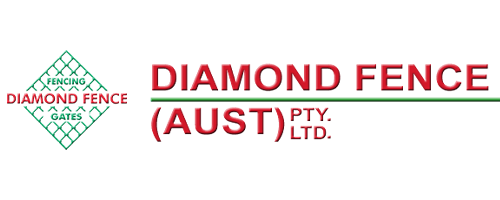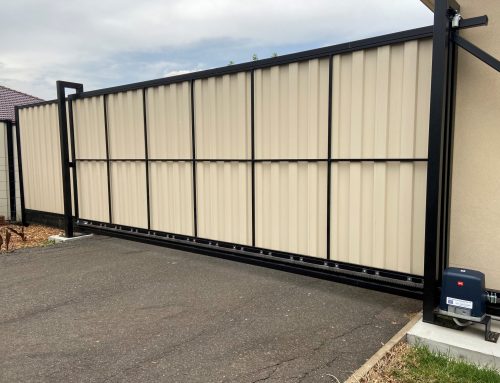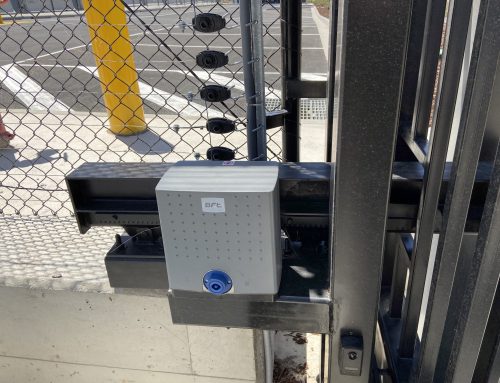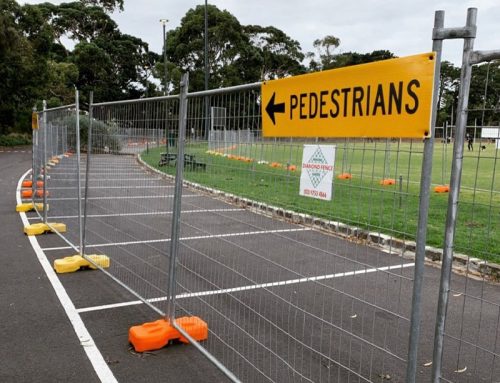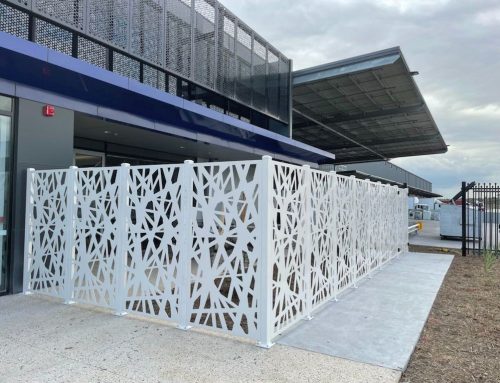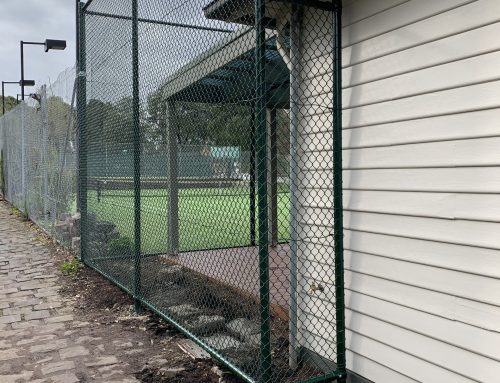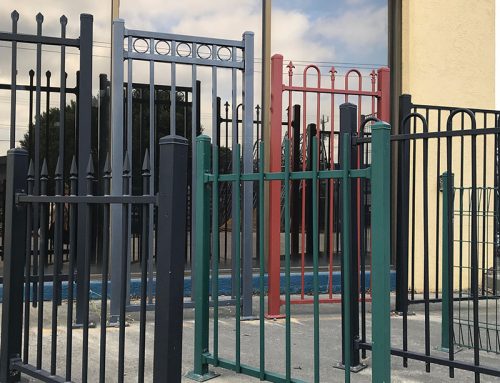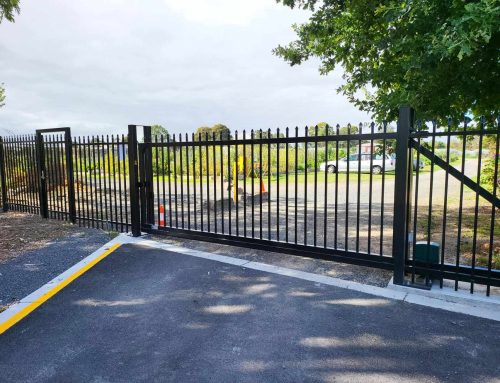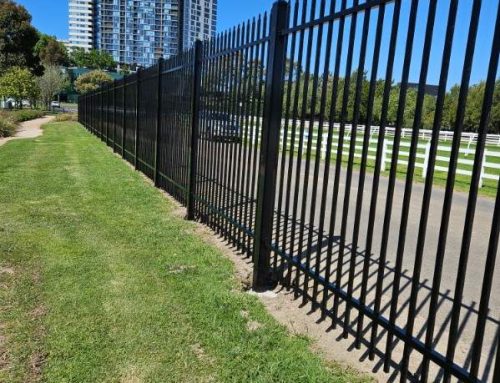If you have decided to install a sliding gate, then the below post may be a good source of information. Focusing on the installation of sliding gates, you will find out several tips on how you can make your installation project much smoother.
Before we start, remember that the below is a guide only representing a typical installation. Dimensions and other requirements may vary depending on the gate type and running gear setup accompanying it.
Measurements of the gate
Firstly, you should have a clear idea about the measurements of your driveway or where the sliding gate is going to be installed. Why? Because you need to know whether there is sufficient space next to the driveway for the gate to slide open.
Furthermore, you have to decide if the driveway will be the only entrance to the property or your sliding gate will require a pedestrian gate next to it. It is important to include pedestrian gate in the measurement calculations to avoid any surprises during the installation process.
The surface beneath the sliding gate
What surface is the driveway? Remember that the surface should be continuous concrete. Soil conditions and the traffic weights will determine the depth of the footing.
If you do not have concrete, you may need to concrete in the floor rack, or choose to install a bolt down track.
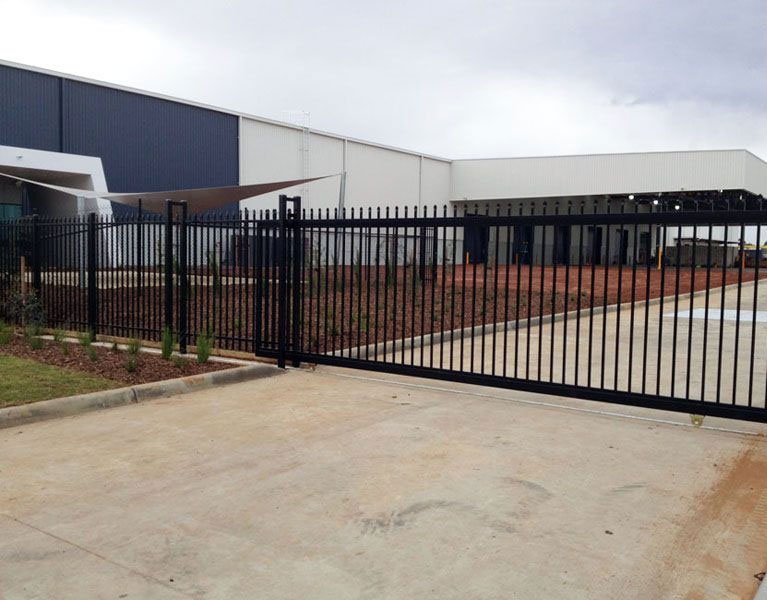
Design of the gate
Design of the gate is an important decision not only from the aesthetic value point of view, but also from the functionality aspect. Solid gates, meaning gates that have been sheeted (e.g. Colorbond steel gates) need more power to open and close the gate. The reason is that the weigth of the gate has increased as well as the wind friction. Hence, when you do your weight calculations (also an important part of your gate installation project), make sure you add extra 25% in when choosing the design. Just to note, a medium gate weighs 280kg, while gates below 200kg are considered light and anything over 400kg heavy.
The material of the gate will determine the weight of the gate. One of the lightest options would be to use aluminium gates. They are also very sturdy, do not corrode in harsh weather condition or by the sea. Additionally, their installation process is relatively quick and easy, and they do not need heavy-duty openers.
On the other hand, steel gates are stronger, and better from the high-security point of view, however, they are much heavier. Steel gates are galvanized and then powder-coated to protect them from corrosion.
The best would be to contact your fencing supplier in order to find out what is the most suitable gate alternative for you.
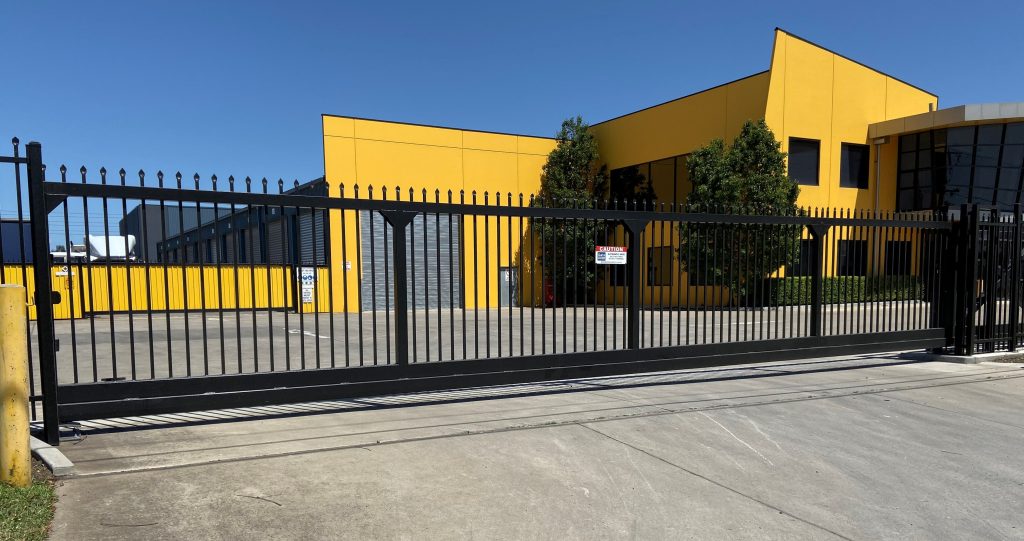
Automatisation of the sliding gates
One of the aspects you need to consider is the automatisation of your gate. Meaning, you have to decide if you want your gate to automatically close behind you when you drive in or out, or not.
If the answer is no, pressing the hand transmitter once you open the gate, and then when you close the sliding gate is enough.
However, if you want your gate to close automatically, you wil need to install photocells (safety beams) that will prevent the gate from closing on obstacles (car).
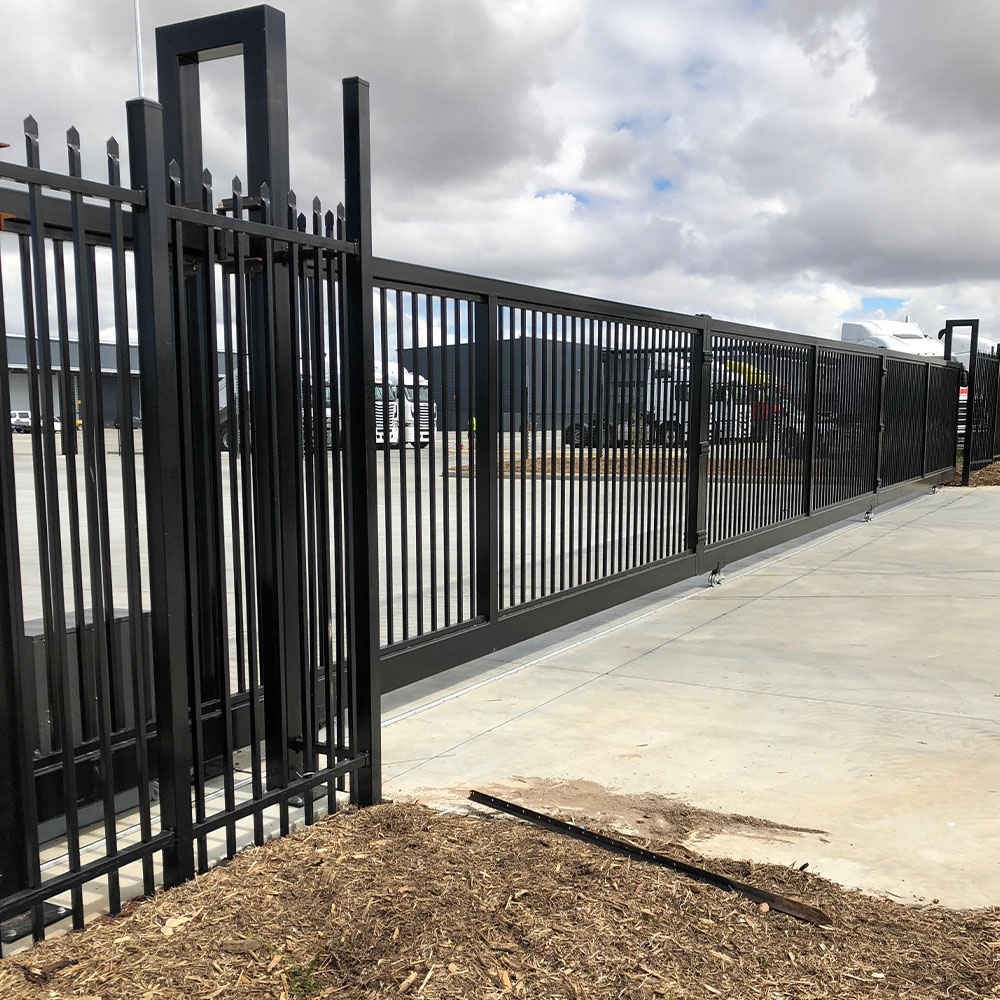
Contacting Diamond Fence
Diamond Fence offers a wide range of sliding gates. Contact our friendly team today to receive a free fencing quote.
Call us on (03) 9753 4566, shoot us an email at info@diamondfence.com.au or get a FREE online quote.

